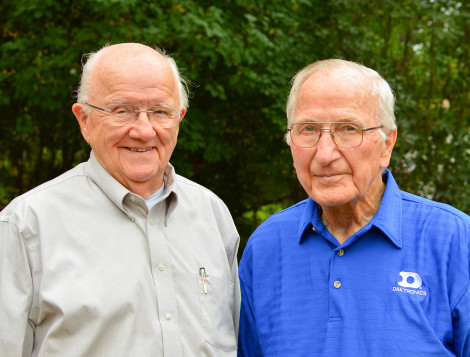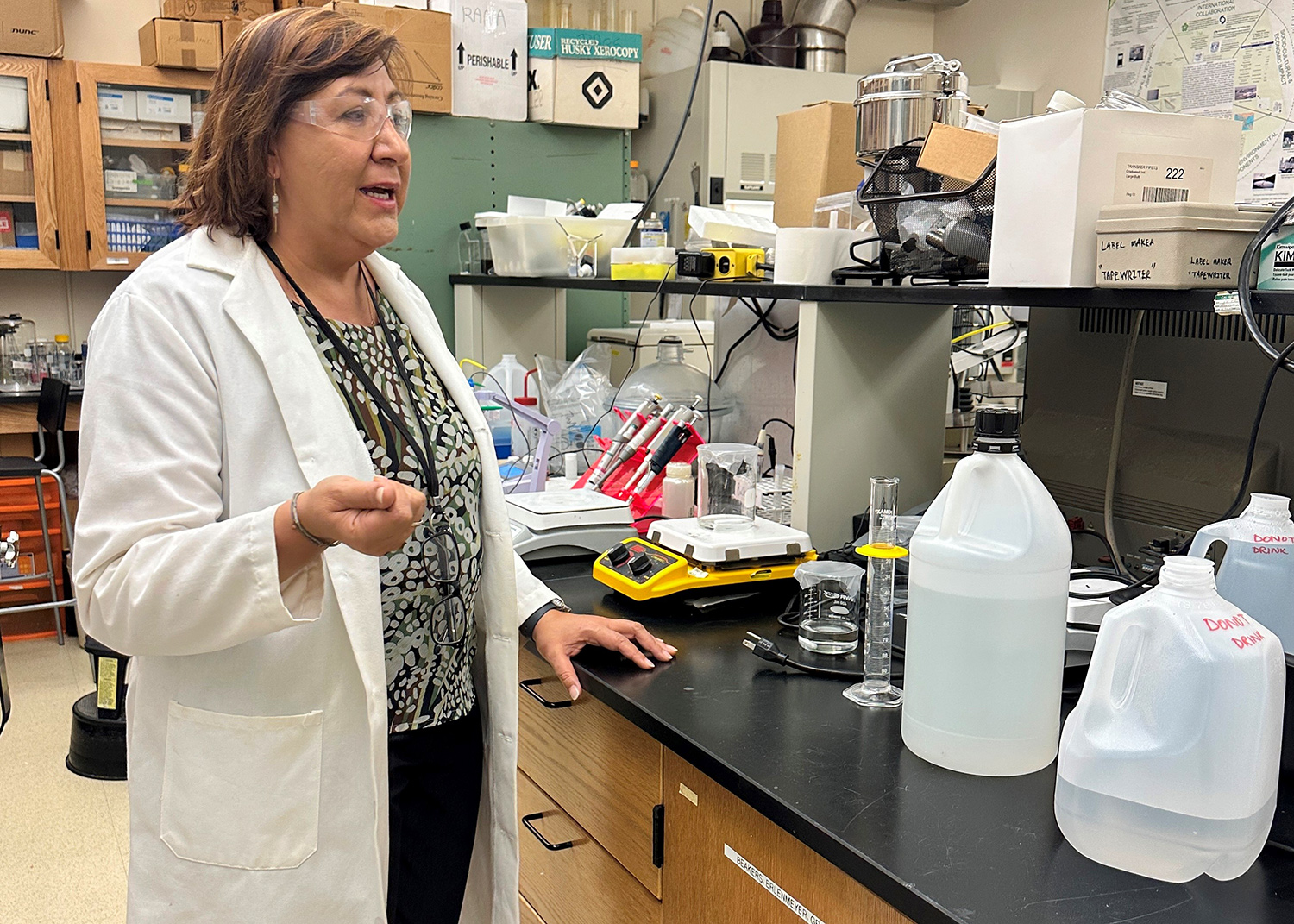
The cactus chemist: Dr. Norma Alcantar
Greatly influenced by the women in her life, chemical engineer Dr. Norma Alcantar uses nature’s prickly plants to point to innovative and sustainable solutions in materials science and chemical engineering. As a professor at the University of South Florida, Alcantar uses the insights she gained early in her life from her mother, grandmother, and schoolteachers to mentor the next generation of women in STEAM.
11 min read
Each month, our Journeys of Innovation series tells the stories of inventors or entrepreneurs who have made a positive difference in the world. This month, Whitney Pandil-Eaton and Jayde Stewart's story focuses on Dr. Norma Alcantar, a chemical engineer and professor at the University of South Florida. Her use of cacti in Alzheimer's, water decontamination, and sustainable materials research is tackling a variety of real-world problems.
Do you know an innovator or entrepreneur with an interesting story?
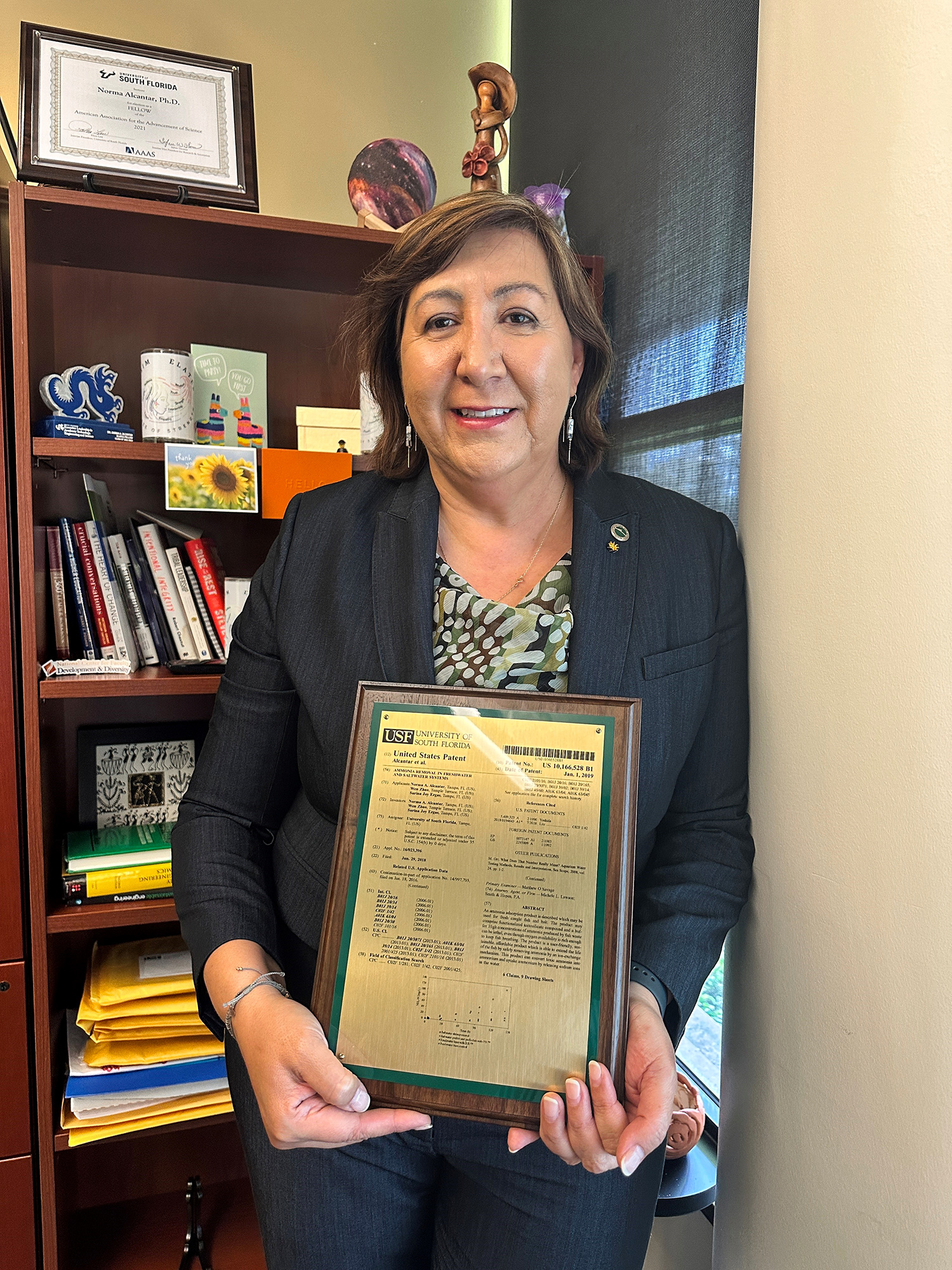
Standing in her office at the University of South Florida, chemical engineer and professor Dr. Norma Alcantar holds a commemorative plaque for Patent No. 10166528B1, an ammonia absorption product used for fresh caught fish or bait that will extend the life of the fish.
(Photo by Jayde Stewart/USPTO)
Among the typical things you’d expect to find in a chemical engineer’s office — honorary awards, patent plaques, and books like “Environmental Analytical Chemistry” and “Introducing Chemical Engineering Thermodynamics” — Dr. Norma Alcantar’s office at the University of South Florida (USF) also showcases her love of life and teaching with books like “Intentional Integrity,” a coffee mug that reads “the influence of a good teacher can never be erased,” and a decorative plaque that reads “It’s All Gonna Be Fine.”
But hidden between the intellectual and inspirational materials, two sets of objects stand out: a series of cacti and owl collectibles. To the uninitiated, they appear to be whimsical office décor, but to those who know Alcantar, the folklore wisdom of the owl and the hardy, but elegantly designed cacti plant represent the tapestry of her life and career.
They are also the embodiment of two fundamental forces that have guided her life and career: her mother, Acrelia Alcantar, and her grandmother, Balbina Zamora.
The owl, a symbol of wisdom since Ancient Greece, is a reminder of her grandmother’s insistence on academic pursuits, her mother’s advice about identity and self-determination when Alcantar came to a fork in the road, and, presently, for Alcantar to pass along her decades of knowledge to the next generation- even at 2 a.m. in a phone call to a graduate student halfway across the globe.
Enduring challenging conditions through innovative adaptations, the cacti represent the teachers that inspired Alcantar’s curiosity about nature and a serendipitous conversation in youth that would alter the trajectory of her life and career, resulting in more than 20 patents, focused mainly on cacti and Alzheimer's research, and invitations from around the world for her expertise on water purification technology.
Her lips quiver and her eyes well — evidence of the immense love, respect, and sorrow she still feels years after their passing — as she reminisces about the lessons taught and learned: respect for nature, self-determination, work ethic, and mentorship.
“[Acrelia] was the force of the family,” Alcantar said of her mother, who was one of 12 children. “Everybody respected her. Whatever she said had to be done.”
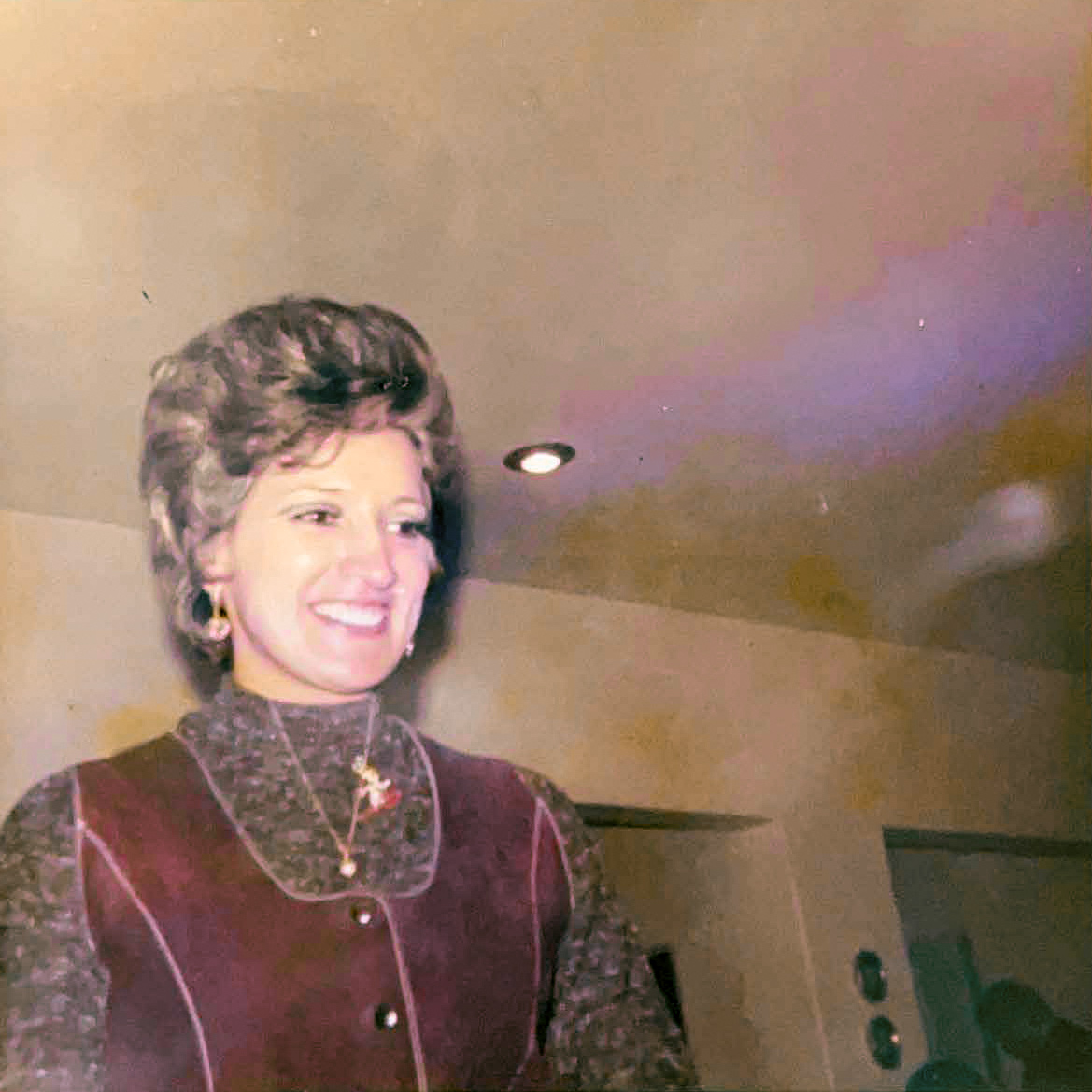
Despite being one of 12 children, Acrelia Alcantar, pictured, was the "force of the family" due to her work ethic and fortitude shown throughout her life. She played an instrumental role in helping her daughter, Norma Alcantar, choose a career path in chemical engineering.
(Courtesy of the Alcantar family)
Widowed at a young age, her mother was a tireless worker who encouraged young Norma to enjoy her childhood, study hard, and be confident in her abilities.
Alcantar recalled a conversation she had with her mother when she was 7 years old. Getting ready for school, she told her mother she wished she had been born a male because she believed at that time that boys had more opportunities than girls.
“Listen, as a girl you can do whatever you want. You can do even more things,” she recalled her mother saying. “She gave me that perspective.”
Employed since the age of 16, Acrelia worked her way up to become an executive assistant for a leader of Mexico’s Tax Administration Service who would go on to become president of Mexico.
Raised in a quaint hillside neighborhood named Tepeyac, north of Mexico City, Mexico, Alcantar would on occasion accompany her mother on her trip into the office and would then spend the day at the National Library in downtown Mexico City, nose buried in mining books from the 1800 and 1900s.
Alcantar remembers the experience well: the library’s book check-out process, the requirement to wear gloves in order to handle the materials, and the look of the antique building.
“I would stay in the library the whole day reading these books, taking notes about where the different elements were located,” she said. “It was so much fun... and interesting and special.”
With Acrelia often working long hours, young Norma would be cared for by her grandmother, Balbina, at her grandmother’s home, known locally as “the house of birds.” More than an abode, the home served as a sanctuary for over 300 birds, including canaries and robins and plants of all varieties. Illiterate well into middle age, Balbina used nature to teach and fuel young Norma’s curiosity and love of the natural world.
“It was all so fascinating – seeing a tiny solid object, a seed, turn into something that is alive,” she said of the days spent helping her grandmother identify and care for a variety of medicinal and native plant species. “Grandma Balbina always taught me things that contradicted what I thought. She taught me curiosity and discovery. I would see a worm on the ground and be disgusted, but my grandma would explain how vital they are to the ecosystem.”
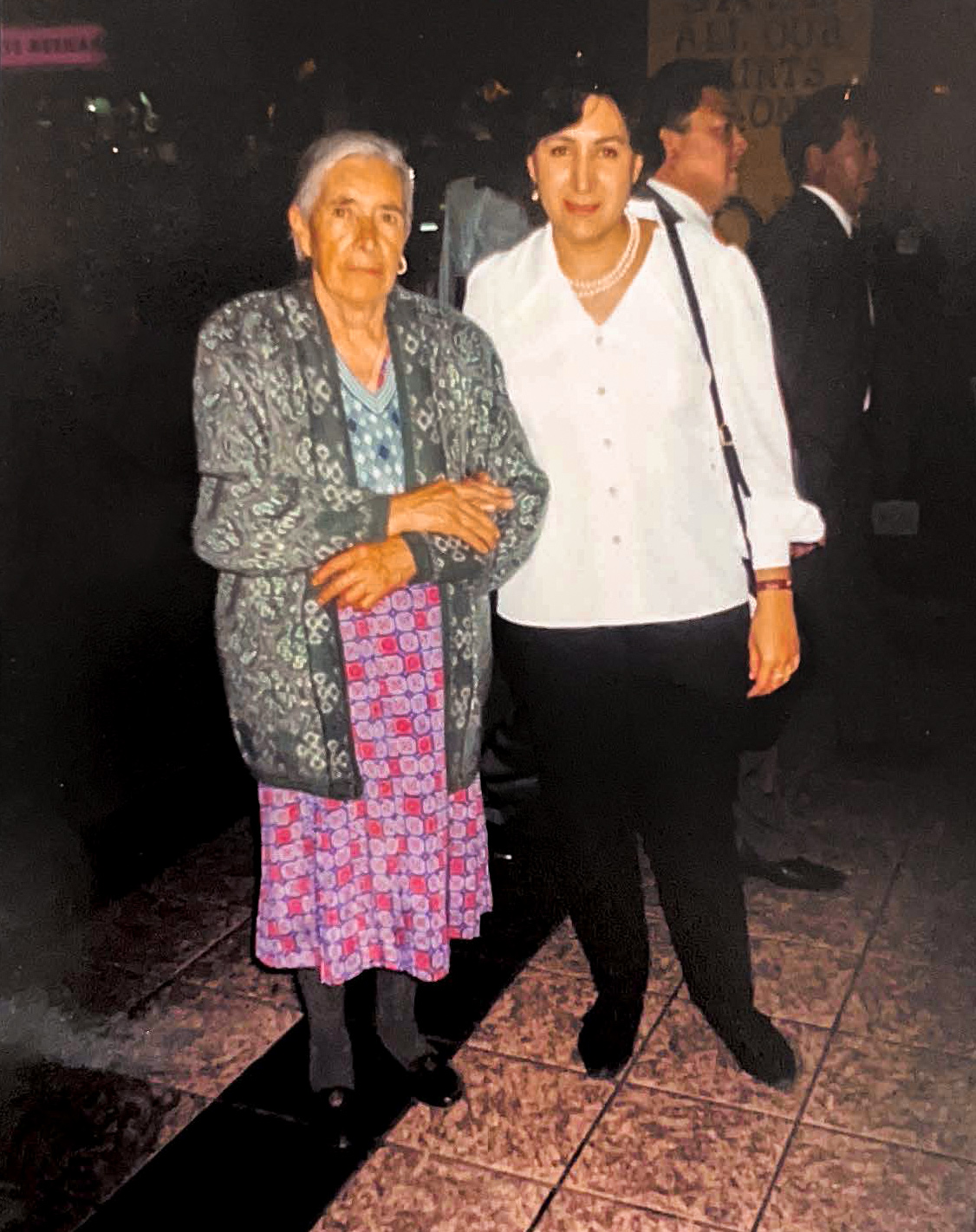
Despite a lack of formal education until mid-life, Balbina Zamora, left, emphasized education for her 12 children and numerous grandchildren, including granddaughter Norma Alcantar, pictured on the right. Alcantar would go on to teach her grandmother how to read and write.
(Courtesy of the Alcantar family)
In addition to the support she received at home, Alcantar said there were a few female teachers during her childhood whose mentorship had a huge impact on her thirst for knowledge.
One was her middle school chemistry teacher.
Alcantar said the teacher once banged her hand against the school wall and declared, “This is made of atoms. You are made of atoms. And I was like ‘no we’re not. We’re made of cells.’”
The teacher explained the concept of these then unseen elemental particles, a concept that struck Alcantar.
“I had dreams [as a child] of what atoms do and what would they look like. The relationship between materials and atoms and everything made of these small particles was a revelation for me.”
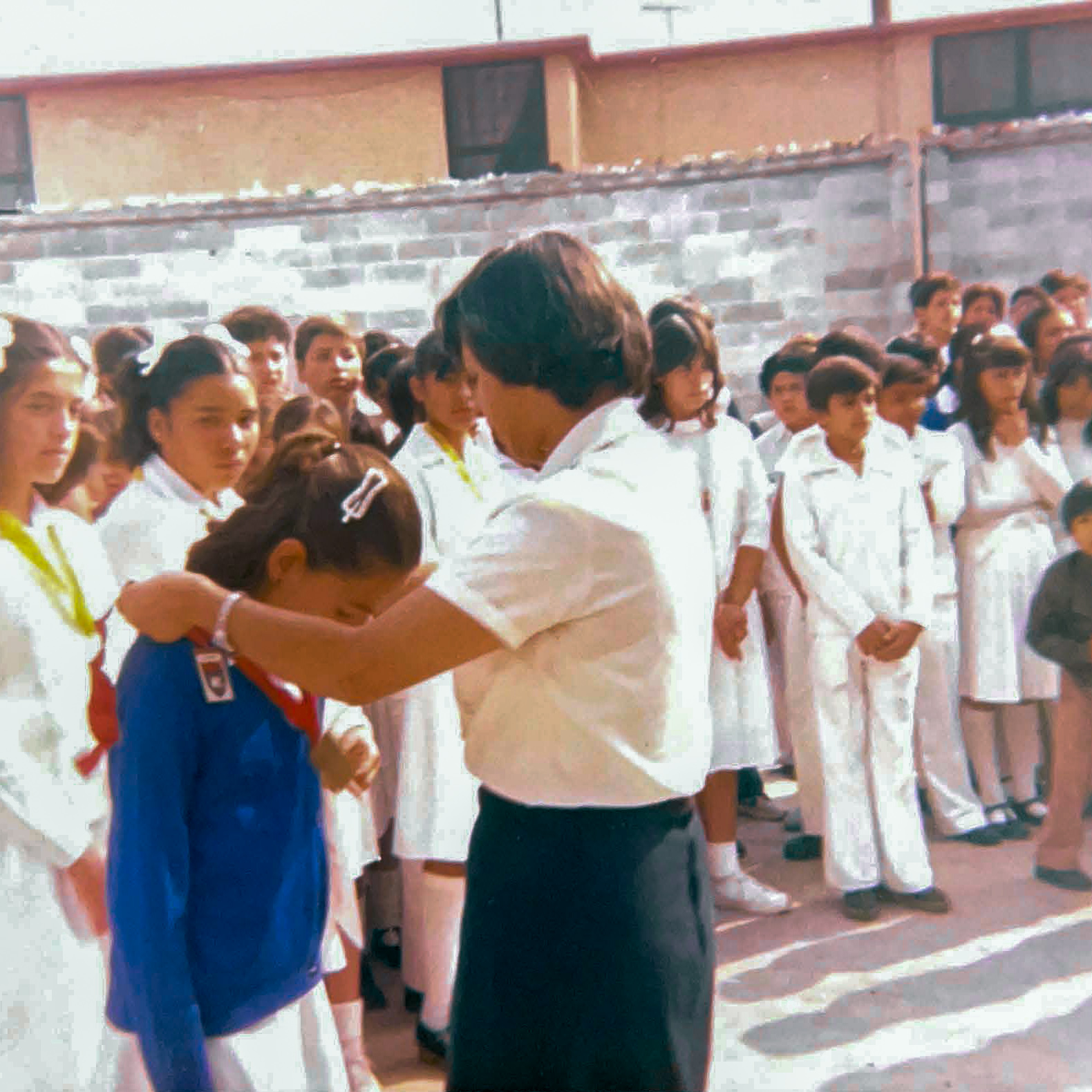
Young Norma Alcantar receives a medal from a teacher during a school assembly. Two female chemistry instructors during Alcantar's education greatly influenced her interest in science and chemical engineering.
(Photo courtesy of the Alcantar family)
That revelation continued to be nurtured when one of Alcantar’s high school teachers encouraged her to compete in a student science fair- a novel experience in Mexico at the time. With the help of an uncle, a sign maker, Alcantar created a map of Mexico that identified where all of the elements of the periodic table could be found using mini light bulbs that would light up.
It was during high school that two conversations — one with her mother and one with her grandmother — helped shape Alcantar’s career path.
During that time, Alcantar’s high school required students to choose an education track. Undecided between psychology and chemistry, and with a deadline looming, she called her mother for guidance.
“She said ‘you have to decide. This is what you’re going to be when you grow up. You have to do this,’” Alcantar recalled.
She chose chemistry. Then chemistry chose her.
Home from school for the day, Alcantar said she was talking to her grandmother about what she had done in her high school chemistry class that day when Balbina shared a piece of knowledge that would later shape Alcantar’s career: that cacti can be used to clean impurities from water.
Growing up in Michoacán, a region located in western Mexico, in the early 1900s, Alcantar said her grandmother told her that as a child she would need to gather water from nearby sources. If the water was dirty, they boiled the water with cactus to clean it.
“How does that work? It just doesn’t make sense,” she said. “But when I came to the U.S., that’s what started my research.”
After receiving her undergraduate and graduate degrees in Mexico, Alcantar moved to Santa Barbara, California, to pursue her doctoral degree in chemical engineering at the University of California- Santa Barbara.
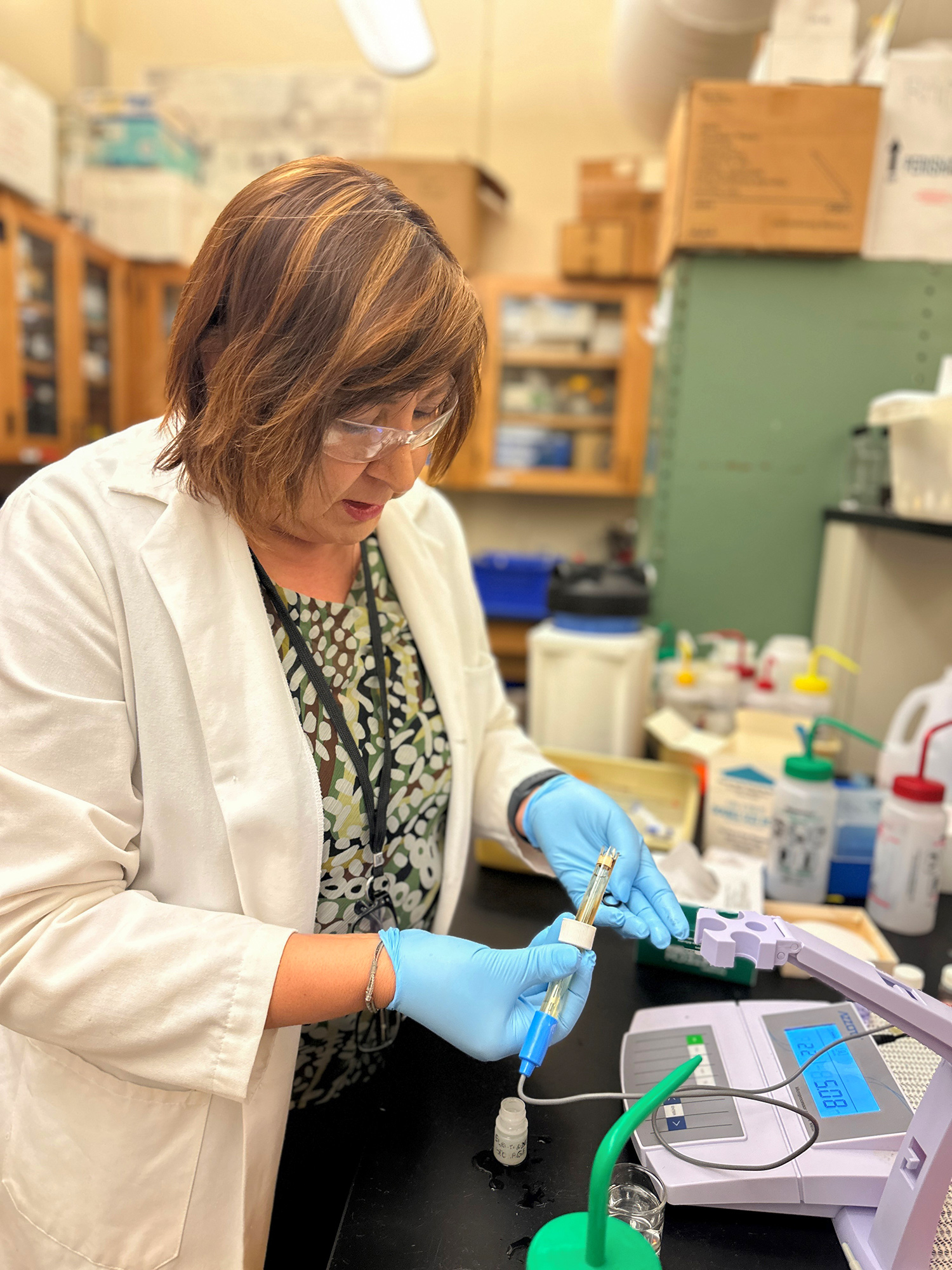
Dr. Norma Alcantar conducts an experiment at her lab at the University of South Florida.
(Photo by Jayde Stewart/USPTO)
Alcantar’s research focuses on a gelatinous substance called mucilage, the result of boiling cactus pads. Mucilage can expand the molecular removal of heavy metals, bacteria, sediments, radioactive isotopes, volatile organic compounds, and hazardous concentrations of fluoride and ammonia from water and soil.
For the last two decades, Alcantar’s technology has been used in numerous applications around the world, including Mexico, Bangladesh, and notably in Port-au-Prince, Haiti, in the aftermath of the earthquake that devastated the island in 2010.
When the island’s water infrastructure collapsed due to the damage, she applied for and received a faster track grant from the National Science Foundation to travel there and conduct water contamination research for two weeks. She focused on leveraging locally available materials, including cactus mucilage and other biopolymers, to develop low-cost and environmentally friendly water treatment technologies.
In collaboration with local communities and organizations, Alcantar's team set up pilot projects to implement the cactus mucilage-based water treatment in rural areas of Haiti. The positive results of these initiatives demonstrated that the innovative technology could be a game-changer in water treatment for resource-constrained regions.
In addition to water contamination research, Alcantar is also using cactus mucilage in her Alzheimer’s research about plaque formation.
She will be starting a new research study soon to investigate the use of cacti to bind plaque in the brains of mice. Plaque formation in Alzheimer’s patients can lead to problems with brain function.
Her work has been featured in a variety of publications from scholarly research journals to elementary science textbooks. A children’s book has even been written about Alcantar’s life. She was inducted into the Florida Inventors Hall of Fame in 2021.
As a professor in the Department of Chemical Engineering and Biomedical Engineering at USF, Alcantar works with undergraduate and graduate students to continue finding new uses for the cacti mucilage. Currently, her students — all women from diverse backgrounds — are conducting research projects on sustainable packaging options, improving the taste of farm-raised fish, water purification systems, and creating a battery system using renewable sources.
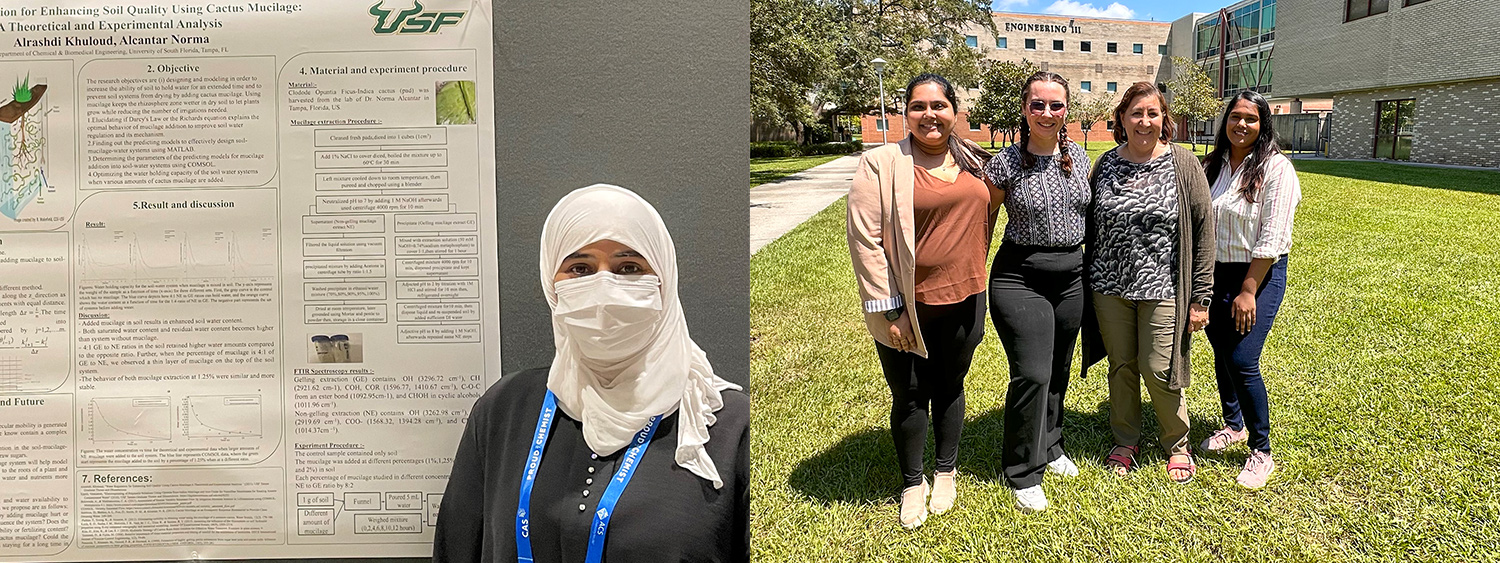
Dr. Norma Alcantar's undergraduate and graduate research students at the University of South Florida. At left, Khuloud Alrashdi stands next to an illustrated poster showing research she conducted with Dr. Alcantar. The group photo on the right shows from left to right: Eesha Bhattacharjee, Emily Parrish, Dr. Norma Alcantar, and Rama Mahita Kambhampati.
One of Alcantar’s students is Eesha Bhattacharjee, who is in her second year of the chemical engineering doctoral program at USF. Her research focuses on renewable packaging materials using the mucilage of the cactus to replace single-use plastics for cold and hot food packages. Originally from India, Bhattacharjee witnessed Alcantar’s commitment to family and mentorship firsthand. When Bhattacharjee’s grandmother died unexpectedly, Alcantar encouraged her student to fly back to India to support her family and helped make educational accommodations to keep Bhattacharjee on track.
Her compassion comes from a place of empathy and experience.
Long a source of strength for her large extended family, Alcantar’s mother, Acrelia, battled breast cancer for 14 years, enduring biopsies, a mastectomy, remission, cancer relapse, chemotherapy, radiation and a host of other organic and inorganic remedies.
Despite moving to Santa Barbara, California, to pursue her doctoral degree during this time, she would speak to her mother and grandmother weekly. When Acrelia was well enough to travel, the family would take trips regularly between California and Mexico to make memories for a lifetime.
When her mother wasn’t well, she witnessed the power of loving support in action.
Due to chemotherapy treatments, Acrelia would routinely experience headaches and bouts of nauseousness. Alcantar said her grandmother, Balbina, would cook meals at a neighbor’s house to avoid introducing odors into the home or learned to cook meals that had few aromas. She also handmade and hung window coverings to address light sensitivity issues caused by Acrelia’s illness.
Although both Acrelia and Balbina have since passed, the maternal wisdom, educational support, and mentorship they showed Alcantar now shines through to her university students.
Bhattacharjee said Alcantar’s accommodating style, professional guidance, willingness to share resources and knowledge, and availability to talk about “anything under the sun” has been instrumental in her development as a researcher.
“I’m very inspired and motivated by her,” Bhattacharjee said. “I’m one of the very lucky people who have had a chance to be her student and come under her guidance… women in STEM [are] always a minority. Numbers are increasing, but we face [challenges] on a daily basis. It’s extremely inspiring to see her in the position that she is.”
For Alcantar, it all comes full circle: the wisdom of her grandmother, the work ethic of her mother, the mentorship from educators, and the opportunities nature can provide. She credits the love and support of the women in her life for her career in academia and mentorship of future leaders.
“I have never regretted studying chemical engineering,” she said. “I always find it fascinating... and it has given me the foundation to go into many different areas like chemistry, physics, math [and] biology. The fundamentals in chemical engineering allows me to see things in a different way.”
Credits
Produced by the USPTO’s Office of the Chief Communications Officer. For feedback or questions, please contact inventorstories@uspto.gov.
Story by Whitney Pandil-Eaton and Jayde Stewart. Additional contributions from Jon Abboud and Eric Atkisson. Special thanks to Dr. Norma Alcantar, Donna Rock, Eesha Bhattacharjee, Emily Parrish, Rama Mahita Kambhampati, and Khuloud Alrashdi.
References
Alcantar, Norma. Interview by Jayde Stewart and Whitney Pandil-Eaton. June 15, 2023.
Alcantar, Norma. Interview by Jayde Stewart. July 26, 2023.
Bhattacharjee, Eesha. Interview by Jayde Stewart. Aug. 4, 2023.
Biographies: Norma A. Alcantar. Nd. USF Research and Innovation of USF Research Foundation. University of South Florida. Accessed May 25, 2023. https://www.usf.edu/research-innovation/rf/bios/norma-alcantar.aspx
Britannica, T. Editors of Encyclopaedia. "Michoacán." Encyclopedia Britannica, July 2, 2023. https://www.britannica.com/place/Michoacan.
Florida Inventors Hall of Fame. “2021 Inductees: Norma A. Alcantar, Ph.D.” Accessed June 15, 2023. https://floridainvents.org/norma-alcantar/?doing_wp_cron=1693337078.3332259654998779296875
Levy, Art. Aug. 31, 2021. “Hall of Fame inventor Norma Alcantar.” Florida Trend. Hall of Fame inventor Norma Alcantar - Florida Trend | Feature
Pallardy, Richard. "2010 Haiti earthquake". Encyclopedia Britannica, 9 Aug. 2023, https://www.britannica.com/event/2010-Haiti-earthquake.




